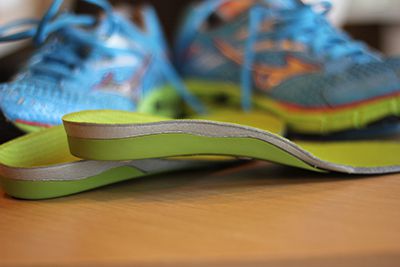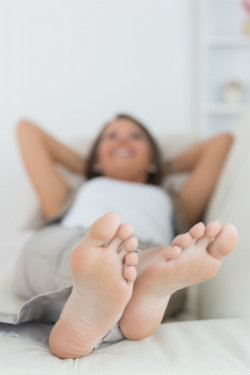Relief thats Not Just for Your Feet 
A foot orthosis (plural: orthoses) is a custom-made, external medical device designed to modify the structural and functional features of the human foot and overall musculoskeletal system. Commonly referred to as orthotics, foot orthoses help maintain proper alignment and force transfer within the 26 bones of the human foot structure.
Made full-length for optimal control, custom-made orthotic external devices are to be inserted inside orthotic-friendly shoes or sandalsreplacing the removable insolein order to provide up to a 50% improvement in foot support and alignment. Foot orthoses are to be worn 16 hours each day under the heel, arch, and ball of your foot.
Research shows that the majority of heel problems can be directly connected to skeletal imbalance. More and more people tend to have some amount of either overpronation (flexible/collapsing, flat foot type) or hypersupination (rigid, high-arch foot type). The presence of these conditions adds constant stress and can overload the network of muscles and bones in your lower legs. This can lead to pain in the feet, ankles, legs, knees, hips, and back. Orthotics can improve function by compensating for existing imbalances and, in most cases, can relieve or prevent the associated pains.
Orthotics are designed to realign your ankle and heel bones to promote a better force transfer down to your toes and up to your neck, in order to alleviate pain in your feet, legs, knees, hips, and spine. Added benefits include restoring balance, improving sports performance, and relieving foot fatigue at the end of the day.
Orthotic devices come in many shapes, sizes, and materials. They fall into three main categories:
Functional orthotics are designed to improve foot function and eradicate, alleviate, or outright prevent pain in the foot, knee, hip, and/or back.
Sport orthotics are tailored toward the functions and motions in a particular sport, providing control, protection from injuries, and balance for activities such as jogging, dancing, skiing, skating, etc.
Protective orthotics help guard against further damage from conditions such as fat pad atrophy or unresponsive, diabetic wounds on the feet. They do this by offloading force and weight from the problem area.
How do you know if orthotics are right for you?
If you have an obvious imbalance that causes such symptoms as flat feet or high arches, or if you have external misalignments such as knock knees, bow knees, in-toeing or out-toeing, then you are likely a good candidate for orthotics. They can also be beneficial if your work or activities place stress on your feet or require you to be on your feet for extended periods of time.
There is also no right age to begin using orthotics. They can be used to treat conditions in children as well as adults.
The best way to find out if orthotics can help you or your child is to make an appointment with us for a full clinical and radiological exam. That way, you can gain a clear understanding of your foot alignment and possible conditions that may benefit from the corrective guidance of orthotic devices. Call Ottawa Foot Clinic at (613) 595-9700 and let our team discuss with you your options for pain relief and better mobility.










 Diagnosing Pediatric Flatfoot
Diagnosing Pediatric Flatfoot


 From all of us at OttawaFootClinic: Remember
From all of us at OttawaFootClinic: Remember